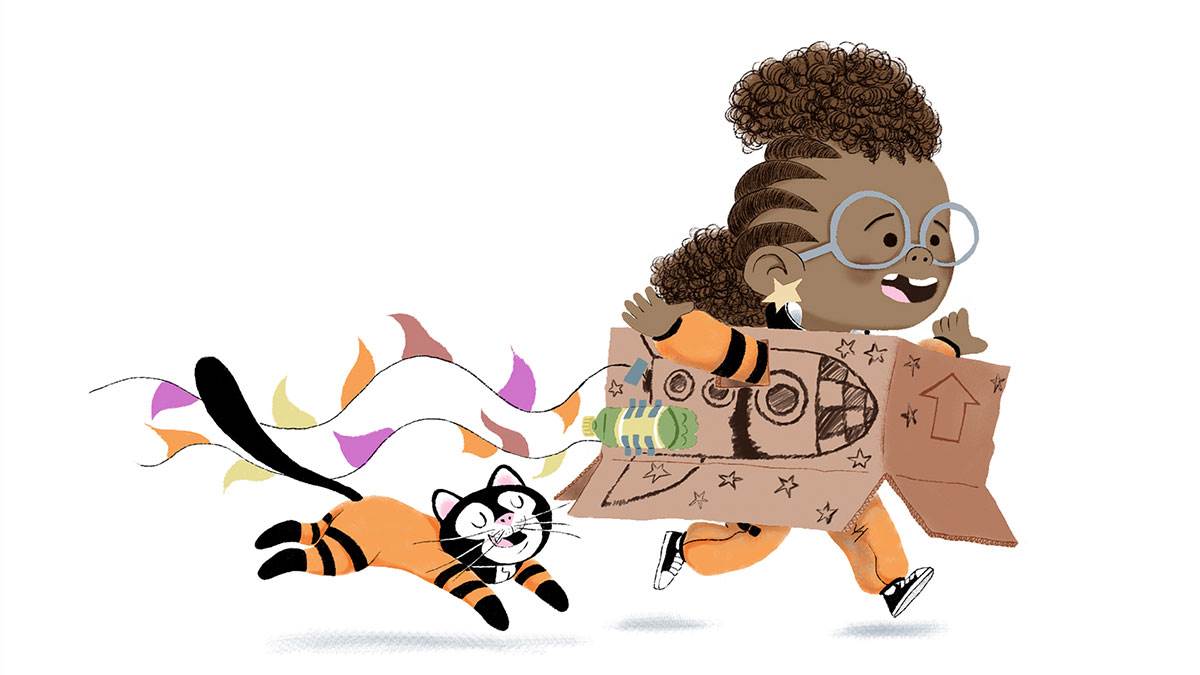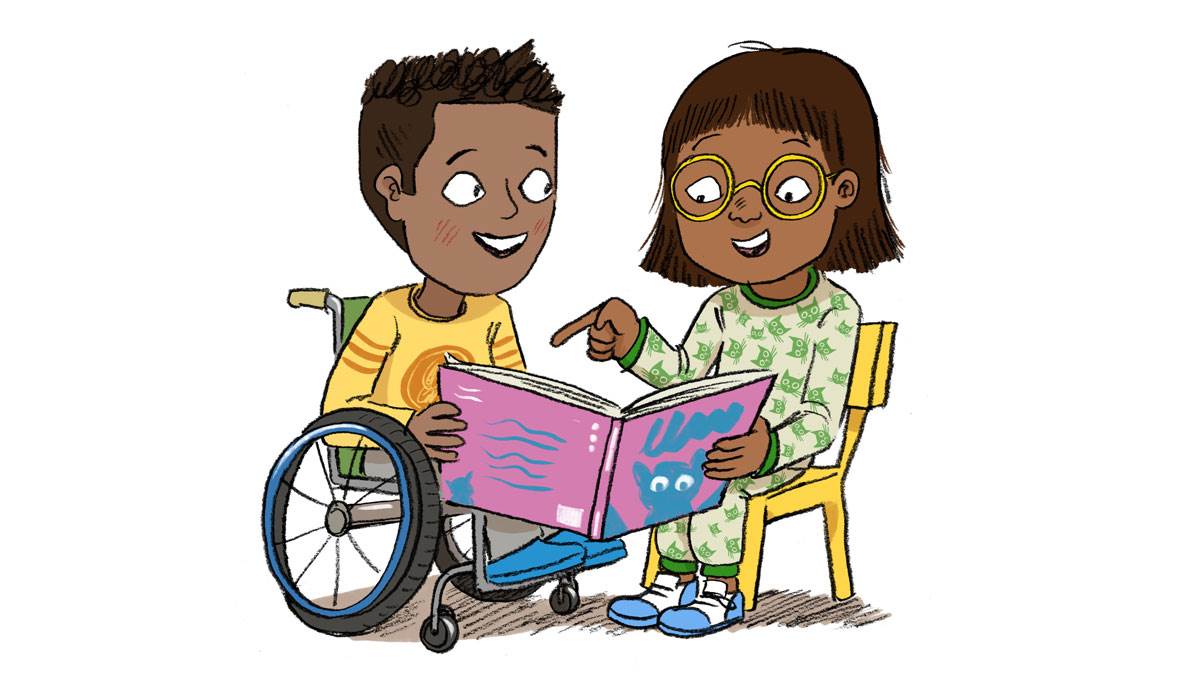Creating inclusive bookshelves: Why diversity matters
Published on: 17 July 2022
Esther Brown at Reading for Pleasure UK explains why it's so important for everyone to see themselves positively represented in books - and how you can create a school library that inspires all children.

Illustration: Dapo Adeola
“She looks like me!” exclaimed 6 year old Anisha excitedly, on first seeing Rocket in Look Up. “This is my favourite book now!”
That is the power of representation in books.
Positive Representation
Every child should have the right and the opportunity to see themselves and their lives represented in the pages of a book. Those living in a single parent family, with black or brown skin, who identify as LGBTQ+, that have a disability, or are experiencing food poverty – all should feel represented by both characters, storylines and information in the books they read.
Well-written and illustrated books break down stereotypes and provide powerful representation for children. They can also help the reader see the world from a different perspective and begin to understand lives that are different from their own, becoming empathetic citizens.
Reflecting Realities
The 2021 CLPE reflecting Realities report showed that…
- Children’s books featuring a minority ethnic character has increased from 4% in 2017 to 15% in 2020 (40% in picture books.)
- However, 33.9% of Primary School age children in England are from a minority ethnic background but only 8% of books published featured a main character of a minority ethnic background.
How do your school library shelves stack up against these statistics?
Illustration: Anjan Sarkar
Books as Windows and Mirrors
In her 1990 paper “Mirrors, Windows, and Sliding Glass Doors,” Rudine Sims-Bishop outlines the importance of books representing and reflecting the world:
“Books are sometimes windows, offering views of worlds that may be real or imagined, familiar or strange… However, a window can also be a mirror. Literature transforms human experience and reflects it back to us, and in that reflection we can see our own lives and experiences as part of a larger human experience. Reading, then, becomes a means of self-affirmation, and readers often seek their mirrors in books.”
How can our school libraries offer these windows and mirrors opportunities for all children and though all genres?
How to create an inclusive school library
- Complete a comprehensive audit of your shelves and remove any books that are offensive, inaccurate or offer racist or overtly ableist views of the world.
- Pupil voice is powerful. Ask the children to help choose new titles. Look through catalogues and publishers’ pages together. What appeals to them? What reflects their lives, families and experiences? Which books show characters and themes that broaden their understanding of the world?
- Use information sources such as Booktrust Represents and Bookmark to help seek out publishers and ‘own voices’ authors creating representative and inclusive books.
- Take a critical look at the teaching curriculum and add diverse texts at its heart. Ensure history, science, art and wider curriculum subjects give a broad and representative view of the world and that literature and teaching in these areas reflects this.
- Use the positive impact of online or in person author or poet visits to show all children that everyone can be a writer and a reader.
- Use the library as a safe and inclusive space to celebrate differences and as a positive space for all to learn from and in.
Representation matters
Seeing yourself represented in a book can turn a child on to reading. However, misrepresentation through stereotyping or feeling omitted from texts can have the opposite effect and turn them away, as they seek validation in other ways.
We have a responsibility to follow the research and use reading for pleasure to develop wellbeing, confidence, pride and achievement so all children can ‘Look Up’ onto their school’s shelves and see themselves in their stories, just like Anisha.
Find out about our BookTrust Represents virtual author visits
Find out about Bookmark, our guide to representations of disability in books
Books promoting diversity
All children deserve to see themselves positively represented in books - and here's our pick of some of the top titles to add to your shelf.
BookTrust Represents: Picture Books
Check out some of our favourite picture books by authors and illustrators of colour.
Casual inclusion of disabled characters
This list comprises books which include disabled characters within their images and/or story naturally, subtly and often without comment.
Picture books that celebrate LGBT+ families
It's so important that little ones grow up and see their type of family set-up reflected in the books you share with them. Here's a list of our favourite children's books that show – and celebrate – diverse families. Perfect for babies all the way up to aged five.









